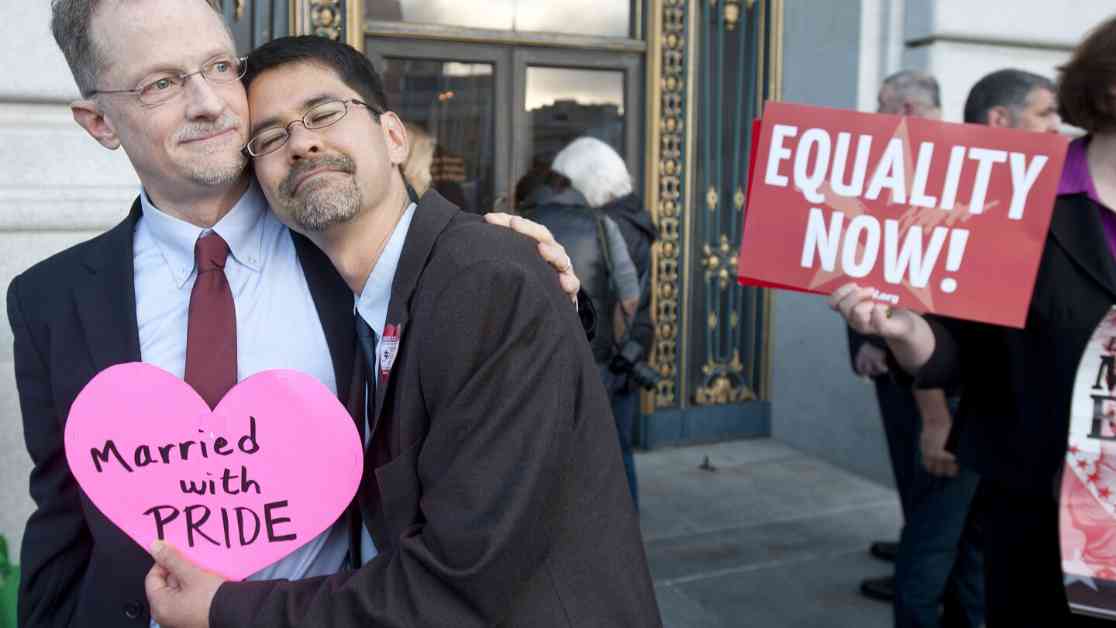In a recent report released by the U.S. Census Bureau, it was found that there were significant differences between same-sex and opposite-sex spouses before the legalization of gay marriage in 2015. However, after the legalization, many of these differences seemed to disappear.
Before 2015, same-sex spouses were typically younger, more educated, and more likely to be employed compared to those in opposite-sex marriages. The number of people living with a same-sex spouse in the U.S. doubled in 2022 compared to the year before gay marriage was legalized. The 2015 Supreme Court decision that made same-sex marriages legal in all 50 states marked a turning point, with around 41% of same-sex spouses reported in 2022 getting married within four years of the ruling.
Interestingly, after the 2015 Supreme Court decision, many of the differences between same-sex and opposite-sex spouses seemed to disappear. Factors such as employment status, length of marriage, and education levels among women showed similarities between the two groups. It was also noted that same-sex spouses who got married after 2015 were older than their counterparts in opposite-sex marriages, which was a reversal from the trend observed before the legalization of gay marriage.
The report highlighted that any variations between gay and heterosexual marriages prior to the Supreme Court decision were largely due to the fact that same-sex marriage was not recognized in all states until 2015. Overall, the households of same-sex spouses were found to resemble those of opposite-sex couples. However, opposite-sex spouses were more likely to have children and larger households, while female same-sex spouses were more inclined to have kids compared to male same-sex spouses. Additionally, same-sex spouses were more likely to share a home with roommates.
The findings of the report shed light on the impact of legalizing gay marriage on the dynamics of same-sex and opposite-sex marriages in the U.S. Moving forward, it will be interesting to see how these trends continue to evolve and whether further changes in societal norms and laws will further bridge the gap between different types of marriages.




